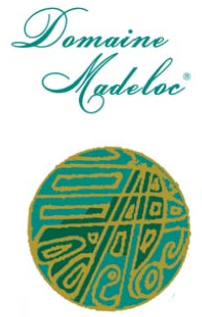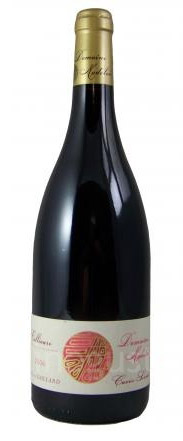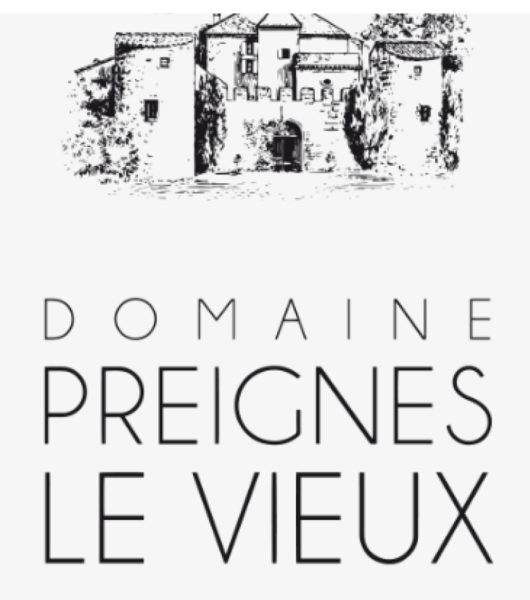Dom. Brunet

Overview
Dom. Brunet is not just another pretty label from France. These are serious wines produced from singular terroirs. Typically, French varietals such as these would all come from the same general growing area and earn the Vin de Table designation. Each Dom. Brunet wine is produced from a separate and distinctive growing area. The Pinot Noir for example is grown in the Limoux appellation which enjoys an Atlantic and Mediterranean influence, ideal for Pinot Noir. Our Malbec is from the Pays d’Oc region. The Sauvignon Blanc is from Gascgony, ideally suited to white wine making with its maritime influence and cool clay soils. The newest varietal, Muscat sec, is made from the noble Muscat Blanc a Petits Grains and is grown in the Languedoc-Roussillon region which is famous for its sweet wines. The last wine of the group is the Chardonnay. It is grown on the cool plateaus of the Herault valley in southern France. Thirty percent of the cuvee is aged in new oak barrels with the remaining seventy percent is matured in stainless steel tanks.

Malbec IGP Pays d'Oc
Soil: Clay and limestone composition.
Grape Variety: 100% Malbec
Plant Density: 6,000 vines/hectare
Viticulture: Traditional growing methods are employed under tight supervision; the soil is plowed; single Guyot pruning is done to remove unwanted new shoots, and to thin out grape bunches and leaves.
Vinification: Traditional. Grapes are destemmed, then fermented for 20 days at a temperature of about 29°C.
Aging: Partially aged in second-year barrels.
Tasting Notes: Deep scarlet in color, bright and limpid. The bouquet reveals notes of red fruit, with a slight touch of licorice. On the palate, the wine is round and beautifully balanced, delightfully harmonious. A real pleasure to drink.
Serving Suggestion: When young, pairs well with charcuterie, grilled meat, and young cheeses. When older, it is best when accompanied by red meat (steak, beef, venison) or with duck.
Cellaring Potential: Excellent cellaring potential, but may also be drunk immediately (if decanted 15-30 minutes beforehand).
Alcohol: 13%

Pinot Noir IGP Pays d’Oc
Location: The Limoux area; this is one of the coolest places in the Languedoc region in southern France.
Grape Variety: 100% Pinot Noir
Vinification: The grapes are 100% destalked, and vinified with pigeage in order to make a soft and gentle fruit extraction of the tannins.
Aging: After 20 days of maceration, the wine is matured on its fine lies in French oak barrels for 4 months.
Tasting Notes: Bright garnet color with purple reflections. An intense and complex bouquet of red fruit and blueberry aromas. The palate is fruit forward with a supple, lingering finish.
Alcohol: 13%

Sauvignon Blanc IGP Pays d’Oc
Location: Grown in the Gascogny region of southwestern France best known as the home of the Three Musketeers, the Sauvignon Blanc grape variety has found here a cool climate and precious chalky soils giving to the wine all of its tremendous flavor profile.
Grape Variety: 100% Sauvignon Blanc
Harvest: Early September
Vinification: The grapes are vinified using modern winemaking techniques
Aging: Matured on its fine lies for 5 months
Tasting Notes: Aromas of citrus, lemon, and litchi. A very limited but very good production!
Alcohol: 12%

Chardonnay IGP Pays d’Oc
Location: Grown on the cool plateaus of the Herault valley in southern France.
Soil: Clay and limestone
Grape Variety: 100% Chardonnay grapes.
Viticulture: Traditional growing methods are employed under tight supervision; the soil is plowed; single Guyot pruning is done to remove unwanted new shoots, and to thin out grape bunches and leaves.
Vinification: Traditional. Grapes are destemmed, then fermented for 20 days at a temperature of about 29°C.
Aging: Thirty percent of the cuvee is aged in new oak barrels with the remaining seventy percent matured in stainless steel tanks.
Tasting Notes: This is a lovely, inexpensive French white in the true Burgundy tradition. No oak, no butter. Ripe fruit fragrances; crisp and dry, yet still lush and soft on the palate.
Food Pairings: Pork, rich fish (salmon, tuna, etc), vegetarian dishes, poultry.
Domaine Madeloc

The Estate
Pierre Gaillard, winemaker of Côte Rôtie, Saint Joseph, and Condrieu, has always been fascinated by the scenic beauty of Banyuls and the quality of the soil. He obtained Domaine Madeloc from the Pagès family in 2002.
The vineyards of Madeloc cover a total area of 29 hectares, including 23 hectares planted within the communes of Banyuls, Cerbère, and Port-Vendres. The plots are scattered between the sea and the mountains at altitudes between 2-450 meters above sea level. The vines are exposed to the north, south, and the east which enriches the complexity of the wines by the multitude of microclimates. Protected from the wind, the plots planted within the valley have a very warm climate, ideal for the maturity of the Banyuls. The plots closer to the sea have a cooler climate, ideal for the slow ripening of the grapes and balance for the Collioure.
The grape varietals planted are typical of Roussillon, however, marked by notes of the Rhone Valley. Grenache is the majority grape used for the Banyuls “Vintage” and is blended with Grenache Gris and Carignan old vines for Banyuls “Traditional”. The Collioure Rouge is a blend of Grenache, Mourvèdre, Syrah, and Carignan. The Grenache Gris is one of the components of the white Banyuls. This varietal is associated with Vermentino and Roussanne for white Collioure.

AOP Banyuls Rouge Robert Pages
The Vines: 90% Grenache noir, 10% Grenache gris. Grenache noir is a grape variety with various red berry aromas (cherry, black currant), stone fruit, licorice and caramel. Grenache gris offers further complexity with mineral-type notes.
The Soil: The parcels are situated at the bottom of the valleys, in the hinterland, offering the most warmth. Thanks to this location, the grapes of Banyuls achieve excellent maturity. The structure of the schist allows the vines’ roots to seek the resources they require deep underground. As a result, the wines express freshness and finesse.
Vinification: A manual harvest, then the traditional red Banyuls is a blended vintage. When about 80 g/l of residual sugar is left over, the wine is muted with pure alcohol (99 % vol.). The wine is then matured in a 30 hl cask or a glass demi-john left out in the sun to provoke oxidation, and therefore quicker aging.
Tasting Notes: This rancio develops prune, dried fruit and gingerbread aromas. The balance between the sugar and alcohol – generally dry –offers good length with coffee and walnut notes on the finish.
Annual Production: 4,000 bottles

AOP Collioure Rouge Serral
The Vines: 80% Grenache Noir, 15% Mourvèdre, 5% Syrah. Grenache noir offers red berry, licorice and caramel aromas. Mourvèdre and Syrah, which are much stronger, contribute structure, strength and complexity.
The Soil: The parcels, situated at an altitude where the temperature is cooler, are perfect for dry wines. The schist soil offers mineral characteristics, elegance and strength to the wines of this terroir. The high density of the rootstock per hectare (6 000 rootstock/ha)allows the vines grow roots deep down underground where they find limited water supplies.
Vinification: A manual harvest takes place.Then the wines are fermented in vats with a cold maceration beforehand and a hot fermentation afterwards. These various stages gently extract of aromas, colors and silkier tannins. The maturing is essentially carried out in vats 18 months in vats (70 %) and in barrels (30 %), in view of obtaining a pleasant and fruity wine. It conserves the red berry aromas of the Grenache Noir. The use of oak barrel ageing offers structure to the Syrah, the Mourvèdre and the best batches of Grenache, by also adding length and fat.
Tasting Notes: Dark color with intense aromas of red berries, of licorice and of vanilla. Melted tannins on the palate. The ripened Grenache offers fig notes on the finish and the Mourvèdre coasts the wine with pleasant smoky notes. Easy to drink.
2012 Reviews: “The 2012 Collioure Serral, a blend of 75% Grenache, 20% Mourvèdre and 5% Syrah, is a big, ripe effort that has notable complexity in its black cherries, iodine, saddle leather and roasted herb-like aromas and flavors. Medium to full-bodied, mouth-filling and textured, it’s a rock-solid effort to enjoy over the coming 5-6 years.” – 89pts, Wine Advocate
Domaine Preignes le Vieux (Sustainable)

The Estate
Situated between Béziers and Agde, on the sunny terraces of the Languedoc vineyards, the 340-hectare Domaine Preignes le Vieux has been carefully preserved by passionate men and women over the last 5 generations. It stands on Roman remains of the Villa Preixanum which date back to the year 118. The remains of amphoras that have been excavated bear witness to the longstanding winemaking tradition in Preignes that go back to the classical antiquity period. Its location was a strategic one, positioned at the center of commercial trading hubs, such as the nearby ancient Mediterranean ports of Agde and Enserune, and also the first Roman road built in Gaul, the Via Domitia. This route, connecting the Rhone to the Pyrenees, brought prosperity to the Narbonnaise vineyards, and their wines were exported throughout the Roman Empire.
The formidable castle of the domaine is one of the oldest Bitterois chateaux, and has been listed as a historic monument since 1995. The fortress was built in 1202, and boasts majestic turrets made of lava stone. Constructed by the Viscount of Pezenas, it has survived throughout the centuries.
The Vic family acquired the domaine in 1905. In 1906, Francois Bergon (the great great grandfather of Jerome Vic, current winemaker) invested in the construction of a new cellar, which still remains the center of vinification at the domaine to this day. Today, the estate is a good marriage between tradition and modernism. Tanks that are currently used are made of stainless steel with thermoregulation, pneumatic wine presses, cooling, and de-stemmer. A blend of traditional and new world storage are used, with a cellar which contains more than 300 wooden barrels, renewed every 3 years.
The current owners are the husband-and-wife team of winemaker Jérôme and oenologist Aurélie Vic:
Jérôme represents the 5th generation of winemakers in the Vic family. His parents were very dedicated to their work as winegrowers, and passed their passion for the vine on to him from an early age. After completing his studies in rural economy, he decided to devote himself to the family business and make his own unique contribution to the history of the domaine.
The daughter of a chemist, Aurélie has a Masters in chemistry and worked as a clinical research assistant for 7 years. It was Jérôme and his family that inspired her to learn more about the world of wine, and after their marriage and the birth of their son, Grégoire, she decided to make a career change and officially became a certified oenologst in 2008.
Qualenvi certified since 2006 and High Environmental Value (HVE) since 2018, Domaine Preignes le Vieux is committed to eco-friendly, sustainable agriculture, with an emphasis on food safety, transparency, and respect for the environment. They are also in the process of obtaining the ISO 22000 standard.

Coteaux de Béziers Réserve Du Domaine Blanc
Appellation: IGP – Pays d’Oc
Soil: Volcanic and clay-gravel
Grape Varieties: 50% Vermentino, 30% Sauvignon, 10% Viognier, 10% Chardonnay
Vinification: This white has been made by skin maceration (the juice macerates on the skin before pressing). It increases the aromatic potential of the grape and its structure. Fermentation is conducted through temperature control process. Low temperature fermentation enhances the fruit flavor of the wine. Pneumatic pressing with press separation.
Tasting Notes: Fresh and delicate. Intense nose with vegetal and citrus fruit notes (lime). Great purity of expression. Energetic, fresh, and fruity on the palate.
Food Pairings: Aperitifs. Mixed salads. Smoked or grilled fish. Desert, fresh fruits.
Alcohol: 12.5%

Coteaux de Béziers Réserve Du Domaine Rouge
Appellation: IGP – Pays d’Oc
Soil: Volcanic and clay-gravel
Grape Varieties: 45% Grenache, 25% Syrah, 15% Cinsault, 15% Merlot
Vinification: The whole grapes are placed in vats. The fermentation process starts naturally. The maceration lasts from 8 to 12 days, to allow the full extraction of fruit flavors.
Tasting Notes: A young, well-balanced wine with red fruits flavors and hints of vegetables and spices.
Food Pairings: Try with a rack of lamb or roast chicken.
Alcohol: 12.5%

Coteaux De Béziers Réserve Du Domaine Rosé
Soil: Volcanic and clay-gravel soils
Grape Varieties: 60% Grenache, 25% Syrah, 15% Cinsault
Growing Method: Trellising wire, Guyot pruning
Plant Density: 4,000 plants/hectare
Average Yield: 58 hl/ha
Harvest: Mechanical
Vinification: Pneumatic pressing with press-juice separation. Maceration for 8 hours in vats. The juice remains in contact with the pulp and skins. Fermentation at 16-18°C over a 12-day period.
Tasting Notes: Pearly pink color with purple reflections. The nose opens with notes of raspberry, wildflower, and mineral. Round and fresh with a lovely, sustained aromatic character.
Serving Suggestion: Serve chilled at 8-10°C
Food Pairings: Best with grilled fish or other seafood dishes.
Alcohol: 12.5%

Aurélie Vic Picpoul De Pinet La Découverte
Location: Along the Mediterranean, at the bottom of the Gulf of Lion, the Picpoul de Pinet terroir extends around the Bassin de Thau, in the middle of the Agde-Pézenas-Sète triangle. This is the largest white wine producing area in the Languedoc: a limestone plateau exposed to the rising sun covered with fragrant scrubland and orderly vineyards, dotted with tall pine forests.
Soil: Clay, limestone, gravel
Grape Variety: 100% Picpoul
Average Age of the Vines: 30-35 years old
Growing Method: Gobelet pruning
Harvest: Mechanical
Vinification: Traditional
Average Yield: 50 hl/ha
Tasting Notes: This has an expressive and very fine nose, with notes of white flowers and citrus fruits. The palate is one of a kind, both full and lively, with zesty hints of lemon peel.
Food Pairings: A nice, southern wine for oysters, spiced fish dishes, eggplant, and fresh goat cheese.
Serving Suggestion: Serve chilled at 8-10 °C
Alcohol: 13.5%



